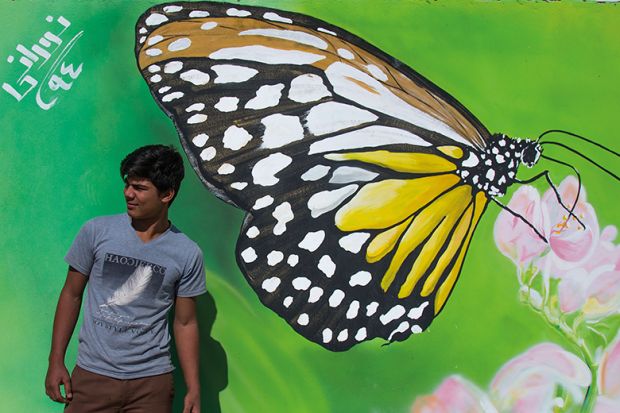In 2015, the Obama administration signed the Iran nuclear deal, giving Iran’s universities a newfound hope of international collaboration.
But any celebration was short-lived. In 2018, the Trump administration backed out of the deal, once more preventing Iranian institutions from conducting joint research with US partners or exchanging students or faculty.
Four years later, Iran again finds itself in a climate of optimism. With negotiations over a renewed nuclear deal – and the easing of sanctions – in sight, Times Higher Education spoke to Iranian scholars about the prospects for renewed global collaboration.
In the decades since 1979, when students seized the US embassy in Tehran, Iran’s higher education sector has been heavily handicapped by various sanctions curbing the country’s economy and trade.
Despite these limitations, higher education is in many respects “thriving”, academics said. Iranian institutions have managed to continue churning out top graduates despite labouring against the backdrop of sanctions and a brain drain.
“Despite the devastating US-led sanctions, Iran continues to have one of the most widely networked higher education sectors in the region, [one] which is globally competitive in terms of output and quality,” said Arshin Adib-Moghaddam, a professor in global thought and comparative philosophies at SOAS University of London.
Between 1999 and 2015 alone, Iran’s undergraduate enrolment more than tripled to nearly 72 per cent − a higher percentage than in Italy, Japan or the UK, and twice the global average, Professor Adib-Moghaddam noted.
By international metrics, too, its universities have thrived. Collaboration has risen, and the output of publications has grown.
Despite the 2018 sanctions, Iran’s international research and scientific collaborations increased from just under 20 per cent in 2017 to more than 31 per cent in 2020, according to the rankings site Scimago.
Iran’s universities – which are especially strong in fields such as medicine and engineering – continue to produce highly qualified graduates, and many of the best students gain admission to top universities in the US and the UK.
But Amin Mohseni-Cheraghlou, an assistant professor in economics at the American University in Washington DC and previously a lecturer at the University of Tehran, was less upbeat.
“If you’re looking at the number of articles published in journals, if that’s your criterion, yes, universities are thriving,” he said. “But if you go to an Iranian university and talk to students, the overall mood is pessimistic.”
For the country’s students, academic success is undermined by uncertainty. Although they are getting a “top-notch” undergraduate education in public universities, there is a “huge disconnect” between what they are learning and the job market, where they face an unemployment rate of 40 per cent to 50 per cent, as well as severe underemployment, Dr Mohseni-Cheraghlou said, noting that this lack of quality jobs sometimes pushed students to pursue postgraduate education abroad.
While Iran has a large undergraduate sector, its postgraduate education is largely outsourced, with 95 per cent of Iranians going abroad to pursue further studies, said Pardis Mahdavi, a dean at Arizona State University.
“At graduate level, it’s really the only way right now,” she said, adding that this was especially true for women, who are banned from pursuing postgraduate degrees in certain subjects at some Iranian institutions.
But although students continue to leave Iran for opportunities abroad, US universities are banned from engaging in formal collaborations with the country, further punishing Iranian institutions.
“Another really important component is transnational research – we need that,” Dr Mahdavi added.
Lifting sanctions could boost research in STEM fields and make technology transfer easier, agreed Dr Mohseni-Cheraghlou. It could also help universities’ research capacity, with institutions no longer forced to turn to the black market to procure lab equipment. Given more opportunities at home, students might think twice about pursuing graduate education abroad.
Ultimately, however, Dr Mohseni-Cheraghlou was sceptical that the lifting of sanctions would be a silver bullet for Iran’s higher education sector.
“I highly doubt that universities or the US private sector will want to get involved in long-term collaborations because there could be another Trump-style pullback,” he said.
For now, at least, universities do not appear to be in any rush to anticipate a post-sanctions world, said Abbas Ganbari, a lecturer in the Faculty of Social Sciences at the University of Tehran, who warned that it might be unwise for universities to leap to any conclusions before the outcome of the US congressional elections in November.
“They will wait and watch,” he said.
后记
Print headline: Iran’s academy glimpses bright post‑sanctions future




